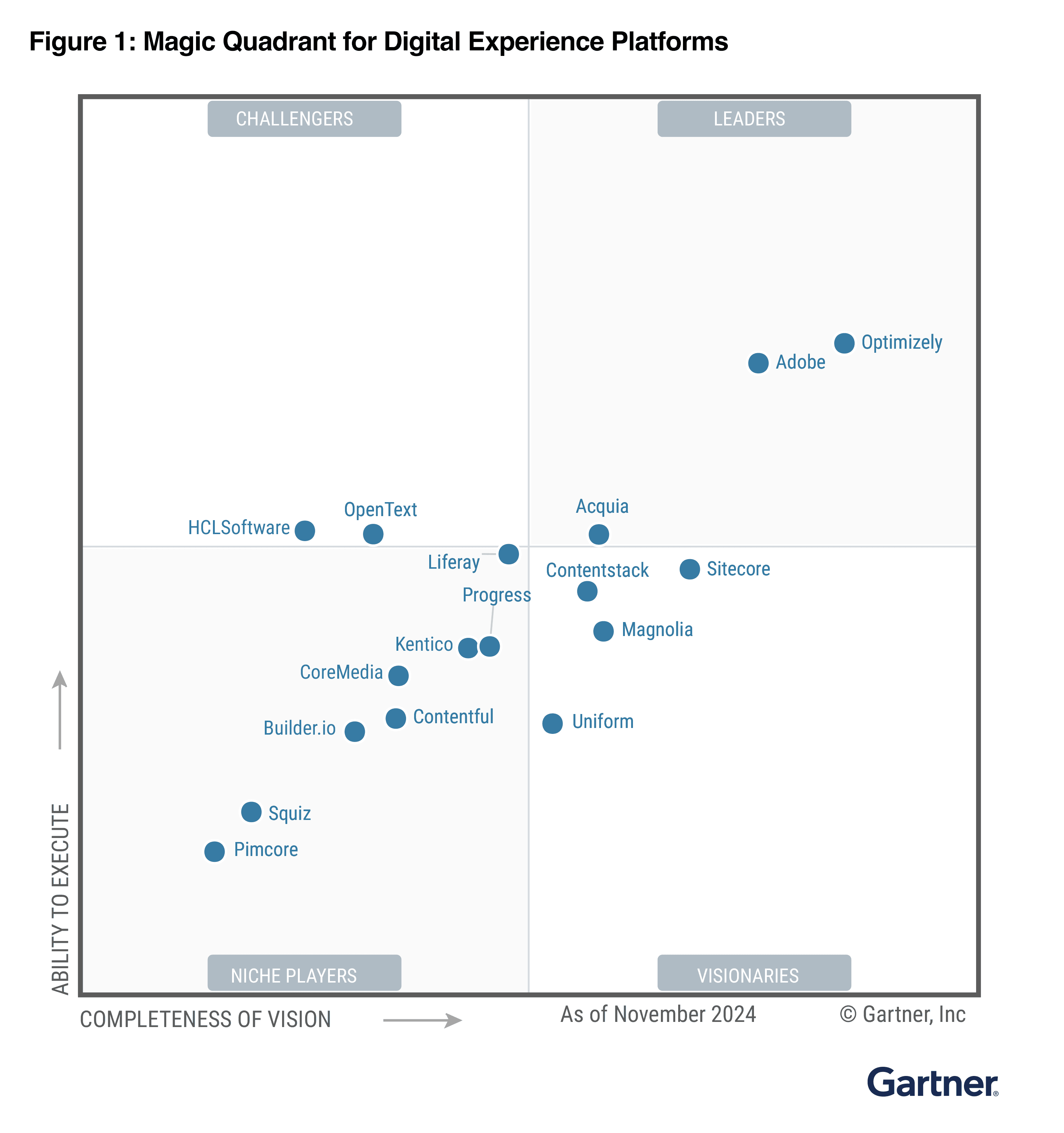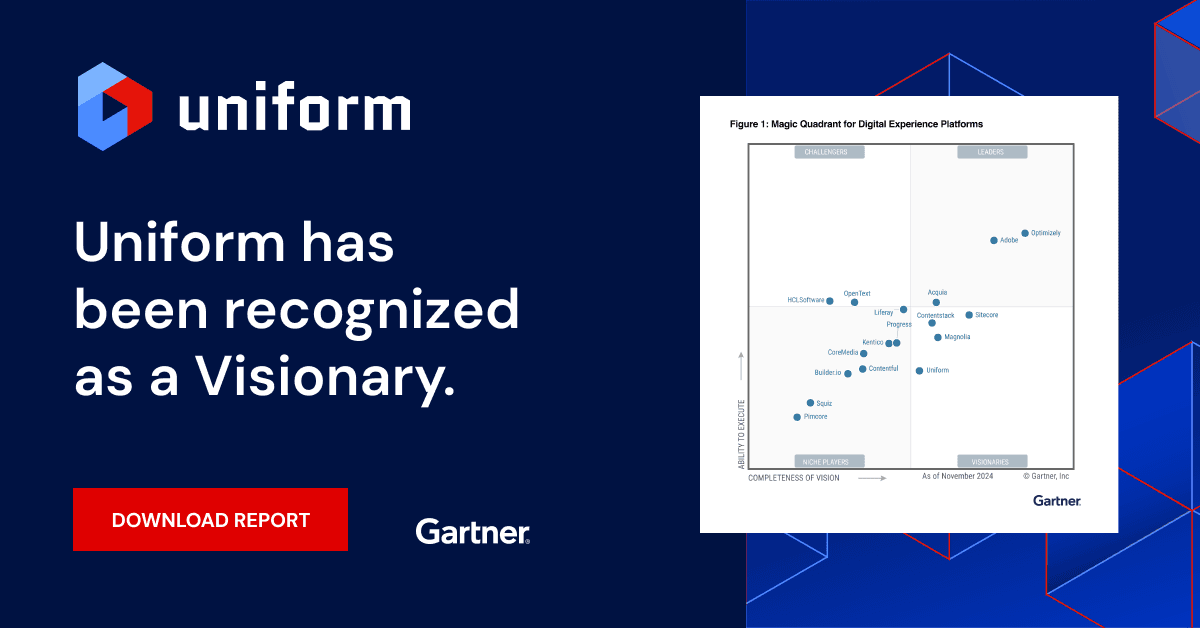Uniform blog/How multisource content management is redefining digital experiences
How multisource content management is redefining digital experiences
How multisource content management is redefining digital experiences
To deliver showstopping omnichannel experiences, digital teams need self-service access to multiple systems in order to create channel-specific content, pull customer data, and analyze results.
Multisource content management and data integration frees digital teams from the constraints of single-source content management, allowing marketers to blend content from anywhere without getting stuck in code or slow processes. In other words, there are significant advantages to embracing multisource capabilities, from composability to vendor neutrality, increasing the power, and unifying your tech stack.
Learn more about multisource content and data delivery, its role in digital experience management, and how it enables digital teams to build fast, omnichannel experiences flexibly and seamlessly.
What is multisource content and data?
At a fundamental level, multisource functionality gives you access to content and data inside any number of sources, whether a content management system (CMS), commerce platform, product information management, or other system, through a single platform.
For accelerated speed to market, a digital experience management solution is the ideal streamlined location for multisource content and data access and the presentation (and likely orchestration) layer of your composable architecture. Yet, many brands, especially those invested in all-in-one legacy systems, rely on content-first, CMS-based tools for experience creation. These architectures fragment content and data across systems, making accessing and reusing information in omnichannel experiences easier and more efficient.
Why CMS-first is the antithesis of multisource
Composability—the ability to select and integrate products best suited to your technological needs—is more difficult to achieve when relying on a single CMS vendor for omnichannel functionality. While working with one vendor contract might be convenient in the short term, re-platforming is costly, and your CMS-first architecture can quickly become unsustainable over time.
Instead of plugging and playing with composable tools that shorten the path to the technologies digital teams need, the CMS-first approach can be restrictive regarding integrations. It can inadvertently silo teams and content, slow production workflows, and negatively impact speed to market.
In contrast, the right multisource platform supports an experience-first approach, empowering users to quickly publish omnichannel experiences that leverage the power of all preferred third-party tools and platforms, regardless of the vendor or team location.
Why multisource is essential in today’s digital experience landscape
Increasingly, multisource capabilities are critical in today's hyper-competitive marketplace as digital experiences expand to more channels and platforms. Meeting customers where they are requires a full suite of tools that contribute to building experiences beyond just web content.
An effective digital experience management platform with multisource functionality is flexible, scalable, and agnostically compatible, providing:
- CMS capabilities enable you to visually and easily configure your experience's behavior.
- Personalization, A/B testing, generative AI, and optimization are available in one user interface, which are the primary benefits of multisource content management.
- A single workspace that streamlines user access to third-party tools and platforms
Digital experience management unites CMS, personalization, analytics, and AI–all preferred developer and marketer tech–in one secure environment. It enables you to edit, customize, and test content from dozens of source systems to create a dynamic, engaging customer experience.
Digital teams can publish content instantly, learn from real-time data, and optimize campaigns strategically.
How a visual CMS helps you leverage multisource content effectively
In tandem with modern content management, the visual workspace is a powerful digital experience management solution, enabling you to simplify integrations while centralizing access to enterprise-wide content and data. Along with its rich visual editor, it solves many obstacles digital teams face when aggregating content from multiple sources:
- Content and design elements aren’t hard-coded; instead, the visual workspace easily integrates and manages components, connecting to any content or data source.
- Components can be templated, allowing companies to scale unique content and personalization with minimal content types (and less budget).
- Marketers and other team members responsible for experience creation and delivery can create and edit content in a highly intuitive interface with instant preview that supports web, mobile, email, and other presentations.
- Working in a centralized workspace supports the unification of content from everywhere and adds the power of cutting-edge tools–from personalization to generative AI–.
Omnichannel is here to stay, and with new content sources emerging daily, forcing everything into a single CMS is no longer practical. The visual workspace, complete with native CMS, personalization, and A/B testing, enables content from anywhere, giving marketers and digital teams greater control and autonomy in digital experience production and reducing dependency on developer implementation.
Use one multisource platform to publish unique digital experiences
Many legacy systems are not designed with multisource content or data in mind, disempowering marketing teams and requiring extensive code and development support to maintain. No-code DX management, such as the visual workspace, bridges content across traditional, legacy, and headless systems, enabling marketers to build omnichannel experiences swiftly and without developer involvement.
Request a demo to see how the Uniform Visual Workspace’s multisource capabilities drive composability at all layers of omnichannel experience management.

Uniform Recognized as a Visionary in 2025 Gartner® Magic Quadrant™ for Digital Experience Platforms
Download




.png&w=1080&q=90)
.png&w=1080&q=90)
.png&w=1080&q=90)